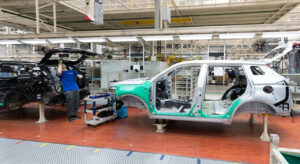It is clear that sales of EVs are on the rise and are becoming an increasingly common sight on the roads. Statistics back this up as sales hit 6.6 million in 2021, which was more than triple the market share from two years prior.
With demand on the rise, it is hugely important that supply keeps up with this demand including the required components and minerals for the manufacturing process.
Demand for Electricity
It is common knowledge that electric cars are much better for the environment than petrol- and diesel-operated vehicles, but what about the supply of electricity needed to power them? Cars like the Vauxhall Corsa electric run entirely on electricity, meaning the more electric cars on the road, the greater demand for electricity from the national grid.
Fortunately, measures have been taken over the last few years in preparation for this and there are no doubts about the grid being able to handle the increased demand for electricity, even during peak hours of 6-8 pm.
Demand for Minerals
An overlooked aspect of electric cars is the minerals that are required to produce the batteries. EV batteries are made up of a number of minerals, including lithium, cobalt, nickel, and graphite, so mining efforts have had to increase heavily in recent years.
Suggestion: 7 Best Dual Action Polisher For Beginners Review To Buy Online
This is problematic as there is a lithium supply defect and it is only mined in a few countries, such as Australia and Chile. Additionally, U.S legislation established that only certain trade partners could mine for lithium, which slows down the process.
What Can be Done?
So, what can be done when demand struggles to keep up with supply? With Australia, Chile, and China accounting for 85% of lithium mining, more Latin American countries need to be able to extract the mineral.
It is a mineral that is not short in supply globally but only a handful of places have the ability to extract it. In addition, the electricity load curve needs to be reworked to prevent too much demand at peak hours.
A smart way of doing this would be to introduce time-of-use tariffs that would incentivize motorists to charge their EVs at home during non-peak hours, such as after midnight.
It is positive to see so many motorists make the switch to electric cars in recent times and hopefully this will only continue in the coming years. It is important to consider the production process, though, as the electric car revolution will place a greater strain on the demand for electricity and the minerals used to make the batteries. As a result of this, there may need to be some changes made in the coming years so that supply can keep up with rising demand.




